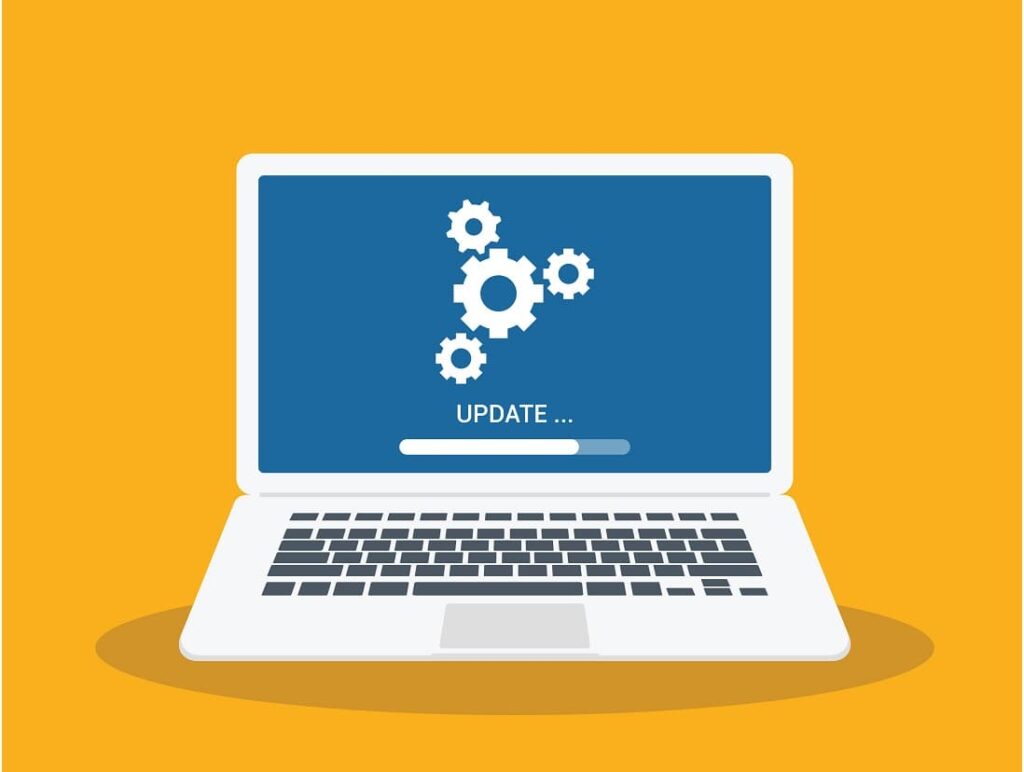The Windows 10 KB5033372 update is a critical enhancement aimed at improving the performance and security of your operating system. However, at times you may experience problems Windows updates stuck download or fails to install with different errors. users report Windows 10 KB5033372 Update won’t install or it’s stuck for hours. If you’ve encountered error codes like 0x80073701 and 0x8009001d, you’re not alone. These issues can be frustrating, but understanding the underlying causes can pave the way for effective solutions.
Windows 10 updates won’t install
One of the primary reasons behind Windows update failures is the intricate nature of the Windows ecosystem. The update process involves a multitude of components, including system files, services, and network connections. Disruptions or inconsistencies within these elements can lead to installation hiccups.
- Poor or unstable internet connectivity can disrupt the downloading of update files, leading to failures during installation.
- Antivirus programs and firewall software can sometimes conflict with the update process, preventing it from completing successfully.
- If the update files themselves are corrupted during the download process, they won’t install properly.
- Updates often require a certain amount of free space on your hard drive. If your disk is full, the update may fail.
Check Internet Connection
Ensure that you have a stable internet connection to download the necessary update files from Microsoft’s servers.
Tip: You can run the ping command ping google.com -t to check your internet connectivity.
If the “ping” command doesn’t receive responses or if you suspect your internet connection is slow or unreliable, you should troubleshoot your network. This might involve checking your router, modem, or contacting your internet service provider (ISP) to ensure you have a stable connection.
Disable Antivirus and VPN
Sometimes, third-party security software can interfere with the update process. Temporarily disable your antivirus software and disconnect from any VPN if configured. Afterward, restart your PC and attempt the update installation again.
- Locate your antivirus software in the system tray (usually in the bottom-right corner of your screen).
- Right-click on the antivirus icon and look for an option like “Disable”, “Turn Off”, or “Pause Protection”. Click on it.
- If you have a VPN configured, find the VPN software on your computer and disconnect from it.
Use Windows Update Troubleshooter
Windows 10 includes a helpful troubleshooter dedicated to resolving update-related issues. Run the Windows update troubleshooter, and let Windows detect and fix the problems
- Press the Windows key + I to open Settings.
- Click on “Update & Security” then navigate to “Troubleshoot.”
- Click “Additional troubleshooters” and select “Windows Update.”
- Run the troubleshooter.
This will start to diagnose, and check the problem that prevents Windows update installation. Also, the troubleshooter lets you know whether it could identify and fix the problem. Once done, restart your PC and check again for Windows updates.
Reset Windows update components
Corrupted components within the Windows Update system can cause installation failures. These Windows update components include the services and temporary files and folders associated with Windows Update.
- Press Windows key + R, type
services.msc, and click OK. - Locate the Windows update service, right-click, and select “stop.”
Let’s clear temporary files and folders associated with Windows Update.
- Open file explorer using Windows key + E,
- Navigate C:\Windows\SoftwareDistribution\Download
- Delete all files and folders inside the download folder, to do this use the keyboard shortcut Ctrl + A to select all the use the delete key.
Note: Don’t worry about these files, windows update download fresh ones when next time check for updates.
Now again open the Windows service console using services.msc and start the Windows update service.
Repair Windows system files
Corrupted system files might be the culprit. Run the following commands in an elevated Command Prompt:
dism /online /cleanup-image /startcomponentcleanup
sfc /scannow
The above command scans all protected system files, and replaces corrupted files with a cached copy that is located in a compressed folder at %WinDir%\System32\dllcache. Allow the scanning process to complete and then restart your system.
Switch Google DNS
Try using Google’s public DNS to resolve update failures.
- Press Windows + R, type, ncpa.cpl and click OK.
- Right-click on the active network adapter, and select properties.
- Choose Internet Protocol version 4 (TCP/IPv4) and click properties.
- Select “Use the following DNS server addresses” and set Preferred DNS server to 8.8.8.8 and Alternate DNS server to 8.8.4.4.
- Checkmark “Validate Settings upon exit,” then click OK and apply.
Manually install Windows update
If all else fails, manually downloading and installing the update might be the solution. Follow these steps:
- Visit the Microsoft Update Catalog using a web browser.
- Search for the update using its Knowledge Base reference number (KB number, e.g., KB5033372).
- Download the update for your specific Windows 10 version.
- Execute the downloaded .msu file and follow the on-screen instructions. A system reboot will be required.
If you are having a problem upgrading to Windows 10 version 22H2 or the Windows 10 feature update fails to install then you can perform an in-place upgrade to Windows 10 version 22H2 with Media Creation Tool or Update Assistant tool.

